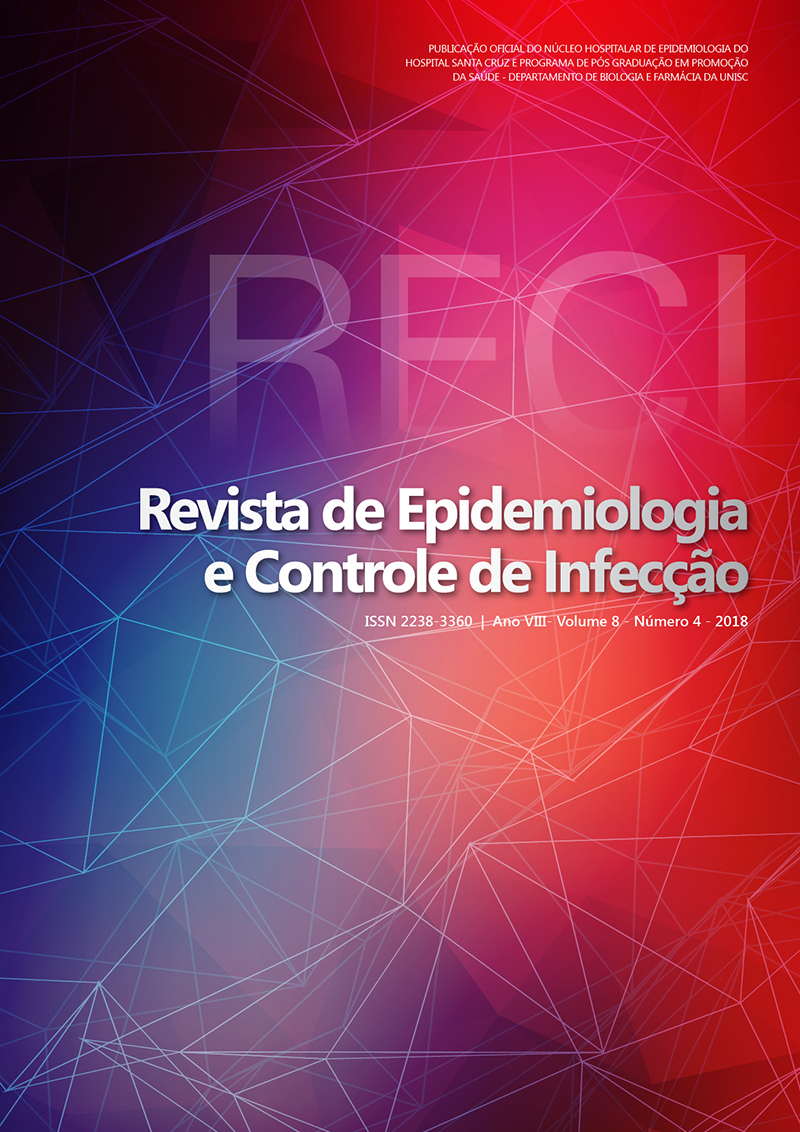Sepse tardía en Unidad de Tratamiento Intensivo Neonatal
DOI:
https://doi.org/10.17058/reci.v8i4.11581Resumen
Justificación y Objetivos: Es esencial conocer los microorganismos presentes em las hemoculturas de pacientes pediátricos internados para una mejor elección de la terapia antibiótica. De esta forma, este trabajo tiene como objetivo verificar la asociación entre parámetros clínicos y epidemiológicos con el desarrollo de sepsis neonatal tardía en pacientes internados en un servicio de pediatría de un hospital del sur de Brasil. Métodos: Estudio transversal, descriptivo, retrospectivo y cualiquantitativo que utilizó datos secundarios oriundos de los prontuarios de pacientes que presentaron criterios clínicos para sepsis neonatal, internados en la Unidad de Tratamiento Intensivo Neonatal (UTIN) del Hospital Santa Cruz. Resultados: De los 588 pacientes internados en la UTIN del Hospital Santa Cruz en el período de 01/01/2013 a 31/12/2015, 123 recién nacidos (RNs) cumplieron los criterios para sepsis neonatal tardía. De estos, 59 (47,97%) presentaron hemocultura positiva, lo que fue más frecuente en RNs prematuros (39,84%) y de bajo peso (43,90%), aunque no hubo asociación estadísticamente significativa entre estos factores y hemocultura positiva. Entre los posibles factores de riesgo para el desarrollo de sepsis neonatal, el uso de ventilación mecánica (p=0,005), realización de cirugía (p=0,019) y permanencia en el hospital por más de un mês (p=0,001) presentaron asociación estadística con hemocultura positiva. Los microorganismos presentes en mayor frecuencia en los hemocultivos fueron los estafilococos coagulasa-negativos (S. epidermidis, S. saprophyticus y S. haemolyticus), encontrados en el 35,71% de los hemocultivos analizados. Conclusión: El estudio evidenció mayor prevalencia de sepsis neonatal tardía en RNs prematuros y de bajo peso, que requirieron mayores cuidados y fueron sometidos a mayor manipulación durante la permanencia en la UTIN. Los procedimientos invasivos y larga permanencia hospitalaria se asociaron significativamente con hemocultura positiva, corroborando con lo descrito en la literatura.Descargas
Descargas
Publicado
Número
Sección
Licencia
The author must state that the paper is original (has not been published previously), not infringing any copyright or other ownership right involving third parties. Once the paper is submitted, the Journal reserves the right to make normative changes, such as spelling and grammar, in order to maintain the language standard, but respecting the author’s style. The published papers become ownership of RECI, considering that all the opinions expressed by the authors are their responsibility. Because we are an open access journal, we allow free use of articles in educational and scientific applications provided the source is cited under the Creative Commons CC-BY license.


